Yesterday as the heat dissipated a little, we took the relatively short walk into Guimaraes. Guimaraes’ fame is based upon it having been Portugal’s first capital when its first King Dom Alfonso Henriques based his court here. Its pre-eminence only lasted 50 years or so, but its motto is “Portugal was born here”. It has also, inevitably, been awarded UNESCO World Heritage Status!
On our walk to the old town we passed the most Portuguese looking of churches, which we had seen on our drive in. St. Gualter’s front is decorated with beautiful blue and white tiles, much smaller examples of which you see all over Portugal on houses, churches and other buildings.

St. Gaulter’s Church
The old town itself is extremely picturesque with lovely small squares comprised of old buildings with pretty coloured balconies. The main square Largo da Oliviera (Olive Tree Square) is supposed to be the place where a King of the Visigoths planted his olive wood staff and commanded it to grow and adjacent is the Church of Our Lady of the Olive Tree, built by a later Portuguese King as thanks for the Virgin’s assistance in his victory over the Castillian army. You may recall from my post about Santiago de Compostela that St. James also had a reputation for winning battles. It’s a good job they didn’t ever come up against each other!
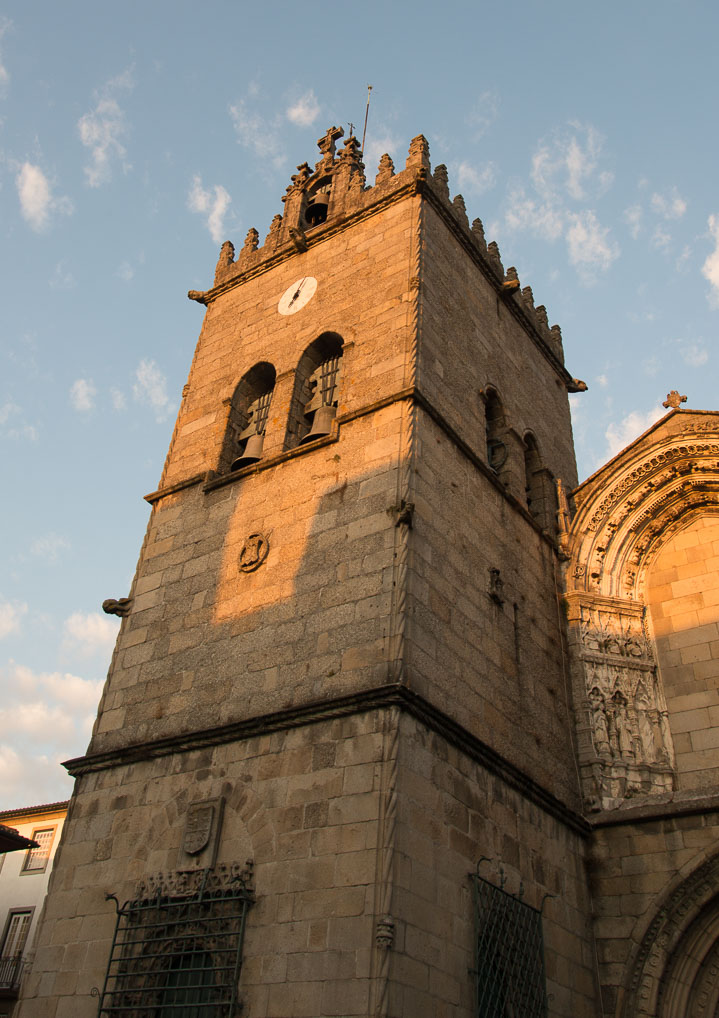
The Church of Our Lady of the Olive Tree
The remainder of Guimaraes is beautiful, if you like self contained old towns. There is a single lane, lined with medieval buildings, including an old convent now used as the town hall, which wends it’s way to the town’s high point which contains what was the Ducal Palace and a very dramatic looking, but much restored 12thCentury castle.
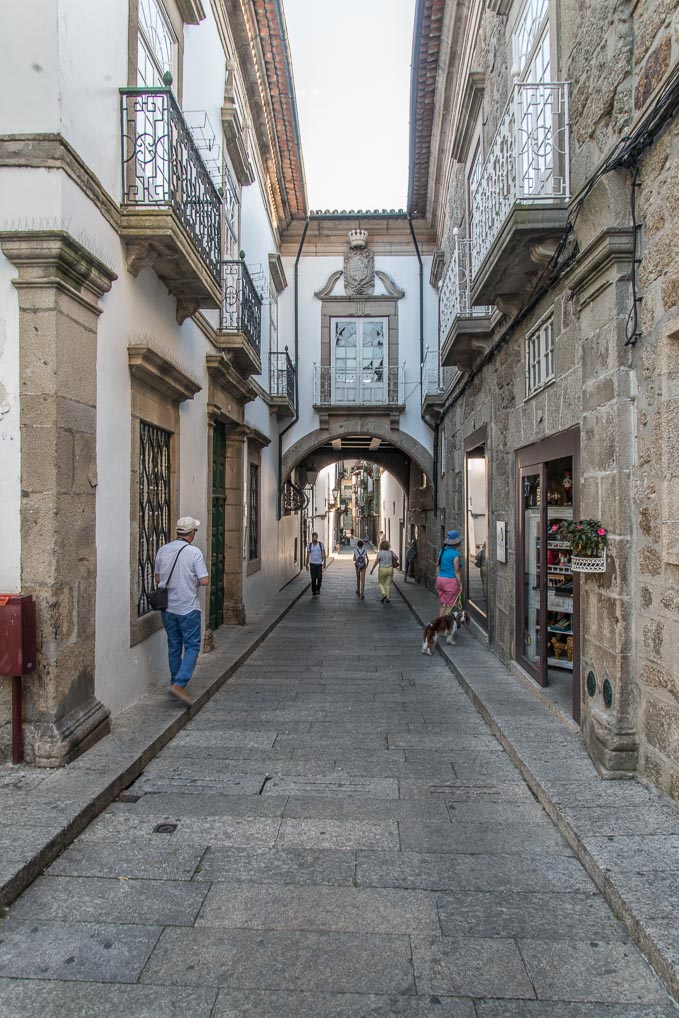
Street Scene
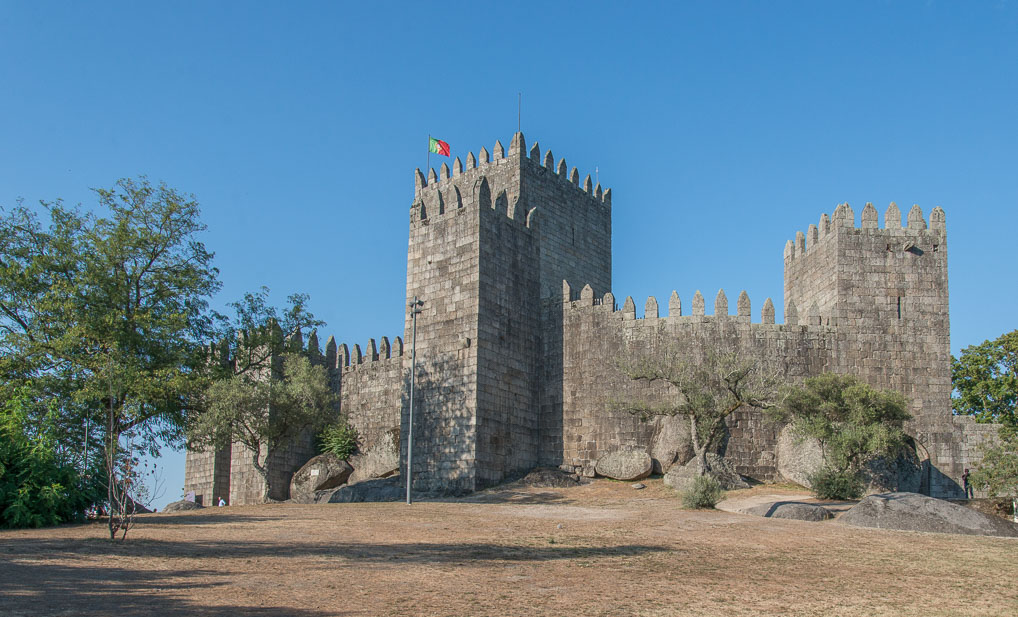
Castle
Throughout the town there were new University students being inducted, I presume, in a strange looking ritual where seniors, dressed in ancient robes, seemed to be making the new comers perform odd chants and dances!
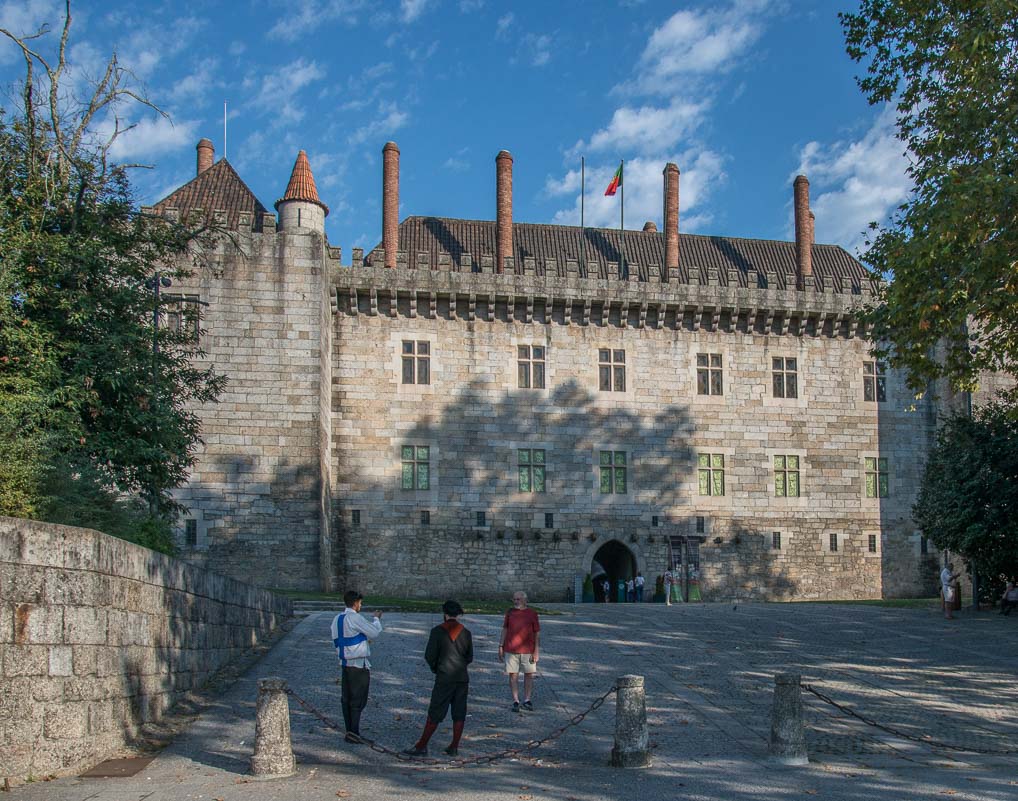
Ducal Palace with dressed up Students in front
We finished our visit by sitting and having a relaxing beer in the lovely Largo da Oliviera, which was thankfully, by then, free of tour groups. I think that we did visit Guimaraes 10 years ago, but even after looking round I am still not certain! It is certainly worth a visit and I won’t forget it this time.

The Square of the Olive Tree
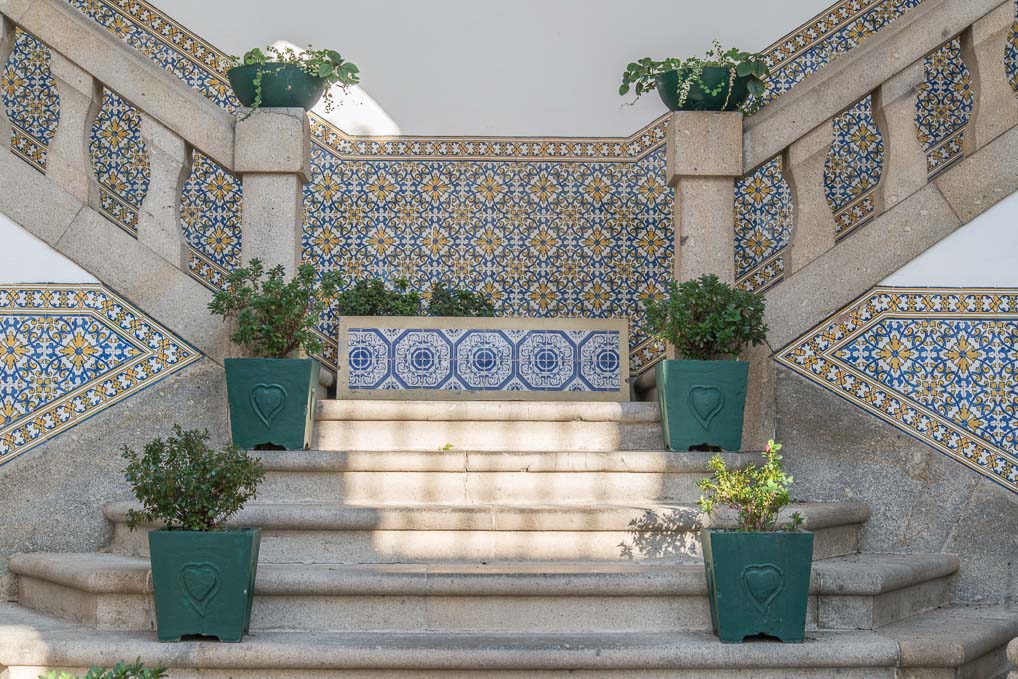
Typical Tiles
Today was a driving day. Not the sort of driving day spent just getting from A to B, but rather a day when driving to see the scenery is the whole purpose of the day.
The Douro valley, which runs from Spain to Porto on the Atlantic coast, is world famous for its wines and particularly port. But unlike some wine growing regions the Douro valley is physically spectacular in its own right. We chose the drive on the D222 which is the road that runs the length of the Douro valley on its south side, through all of its best port vineyards.
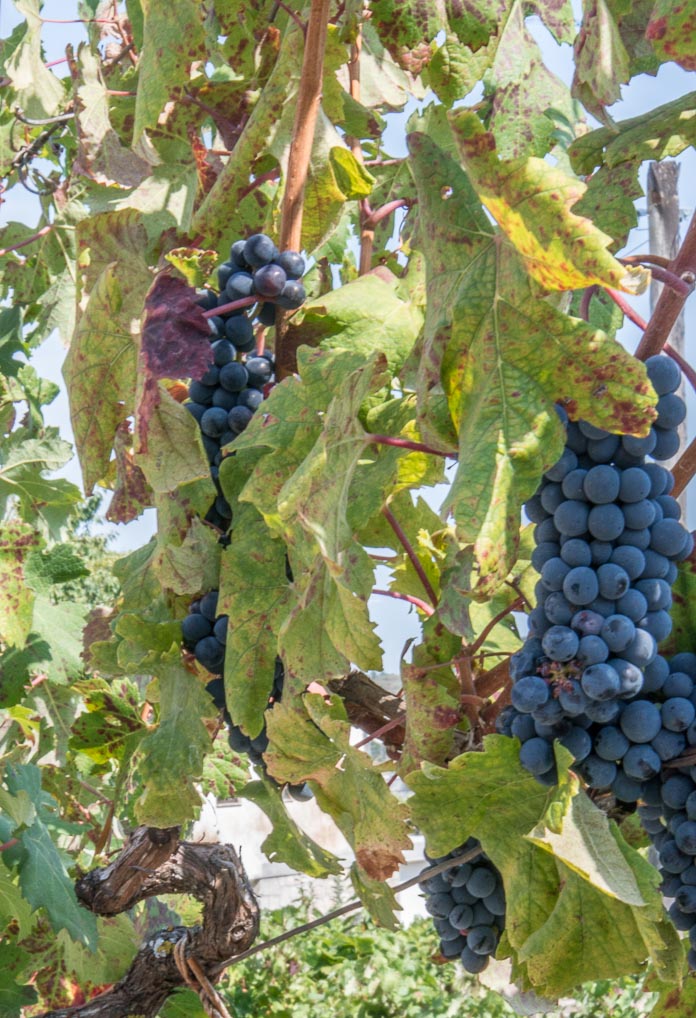
Grapes

The Harvest Coming In
I knew from the Rough Guide that this was not going to be a gentle drive down the banks of the river, like for instance the Moselle in Germany, but I was not quite expecting the mountainous terrain through which the Douro cuts. To put it in perspective, at one point in our drive, while still in the Douro valley, we made a detour to the 11thcentury Romanesque church of Santa Maria de Carquere we reached an altitude of 1,100 metres (3,600 feet). The river itself often was not visible, but when it was it was sometimes several thousand feet below us. Basil, of course, performed magnificently through the numerous hairpins and steep climbs.
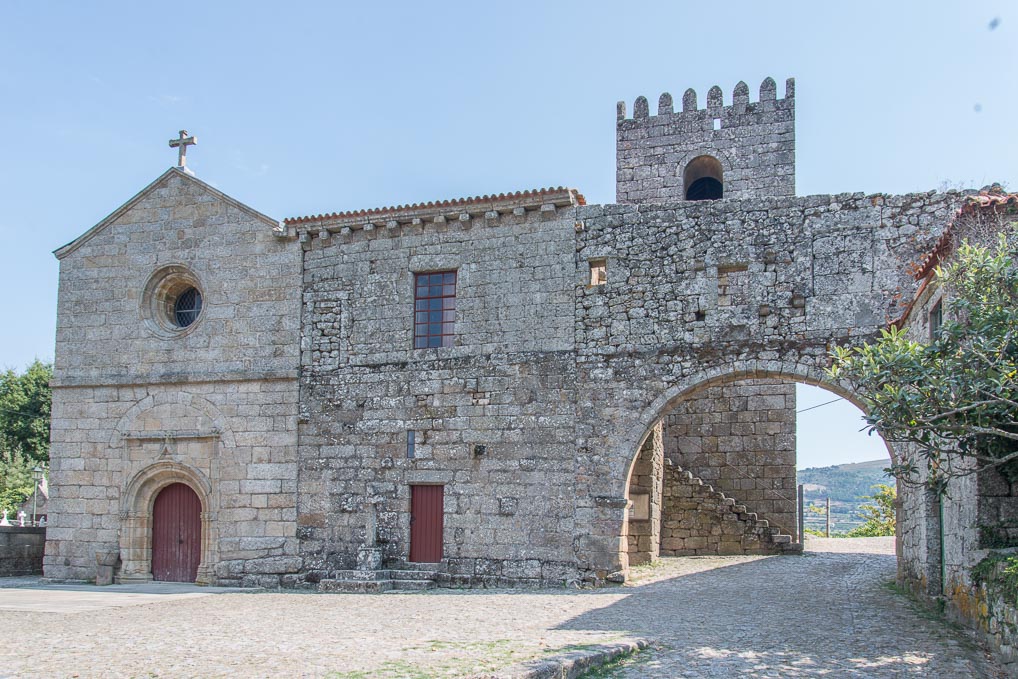
Santa Maria de Carquere
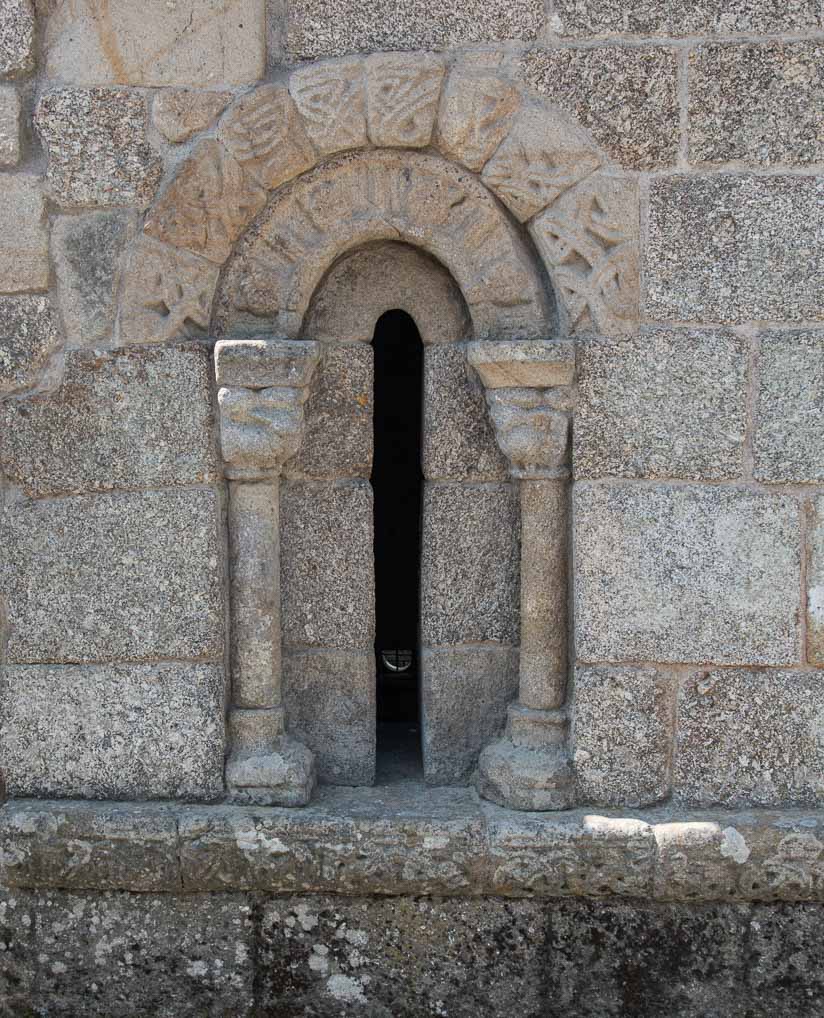
Romanesque Window of the Day
The most choice pieces of land are, naturally, crammed with vineyards often on impracticably steep slopes, but the numerous snow plow signs indicates this can sometimes be a harsh place in the winter. Being late September the grape harvest has begun, as far as we could see, is carried out by hand. Dozens of pickers with large plastic containers on their backs, which when full they dumped into the back of either small lorry or even a pick up truck.
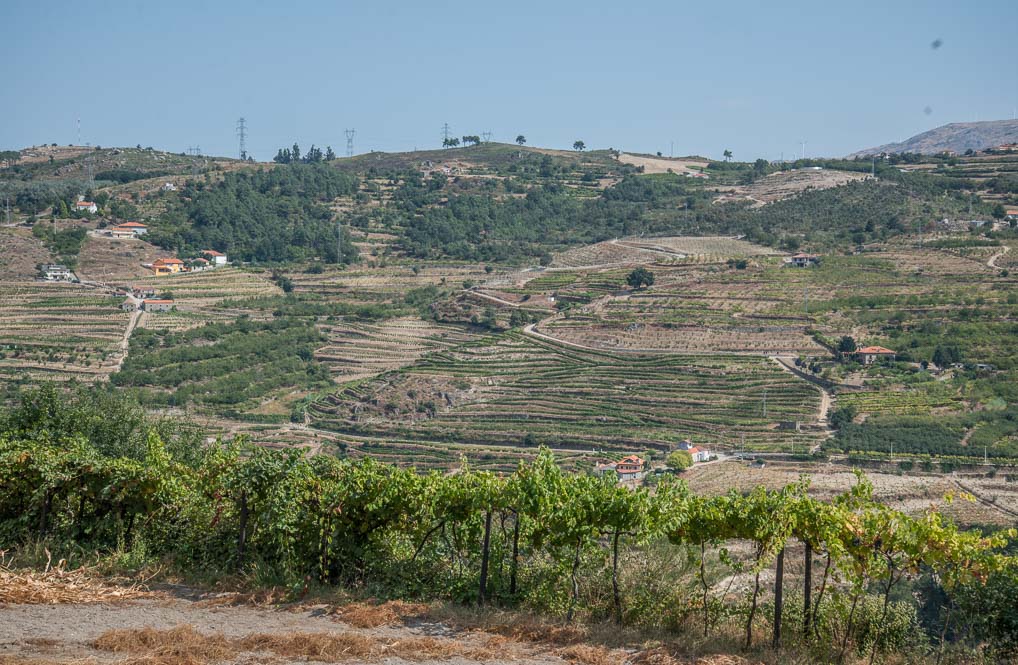
The Vines

The Douro River, way down below
We finally left the river to turn inland for our stopping place above the ancient town of Lamego. We are staying on a slightly expensive private aire/campsite (41.090511, -7.821832) which at €19 a night is a little steep, since we are parked in a sandy compound, albeit with nice views. But it does have the best toilets and showers I have ever seen on a campsite and free WiFi
From here it is about a 20 minute walk into the old town, which I think we will do tomorrow, make a day of it and stay here for a second night.
